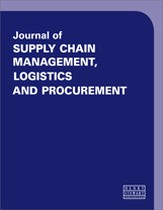How to drive holistic end-to-end supply chain risk management
Abstract
The constantly rising supply chain risk probabilities and increasingly negative performance impact on the supply chain force us to rethink and define an effective supply chain risk management approach. When a certain risk occurs, all internal and external stakeholders along the entire supply chain are affected. Therefore, it is essential to drive a holistic end-to-end supply chain risk management by setting up a dedicated supply chain risk management organisation with interfaces to all relevant business functions, by implementing an customised supply chain risk management process and by putting digital information technologies (eg artificial intelligence [AI]) in place in order to enable the process. The organisation builds a solid fundament and acceptance environment of the process implementation, while the process determines the strategic direction and scope of the information technologies selection. Only a clear vision, mission, strategy and roadmap can ensure and keep the enterprise-wide supply chain risk management programme running in the most efficient way. The systematic set-up of risk and business continuity management in the supply chain requires a sophisticatedly designed organisational structure and a comprehensive stakeholder management. An independent supply chain risk management organisation could be a recommended option in order to drive this strategic topic without any target conflicts between different business functions. The coverage and responsibility share between supply chain risk management and enterprise risk management must be aligned in order to use the existing enterprise-wide risk governance framework, methodology of risk quantification and risk management knowledge. A corporate supply chain risk management process defines a standard approach with roles and responsibilities and should cover the entire risk management cycle: identification, analysis and evaluation, treatment, monitoring and review. Both preventive and reactive supply chain risk management approaches should be considered and integrated as a complete concept. With advanced intelligent information technology, for example machine learning or risk management tools, the complete supply chain risk management process can be automated and digitalised. The process can be managed with minimum human effort and maximum benefit for the entire enterprise.
The full article is available to subscribers to the journal.
Author's Biography
Jian Huang is the global head of corporate supply chain risk management at HELLA. He has a bachelor’s degree in electrical engineering and a master’s degree in business administration. With more than 15 years’ experience in supply chain management and procurement, Jian has worked for different multinational automotive and manufacturing companies in different functions and countries (HELLA Group, Liebherr Group, Robert Bosch Group). In addition, Jian is a certified senior project manager, according to the International Project Management Association, and used his professional project management expertise as a senior project manager in his management consulting career in cooperation with Top 500 Forbes Global companies. Jian has in-depth knowledge in global end-to-end supply chain and procurement management. Currently he is leading the HELLA corporate supply chain risk management team with the target to set up an end-to-end supply chain risk management process by implementation of new technologies across different business functions (procurement, logistics, operations, sales) worldwide.
Citation
Huang, Jian (2020, June 1). How to drive holistic end-to-end supply chain risk management. In the Journal of Supply Chain Management, Logistics and Procurement, Volume 2, Issue 4. https://doi.org/10.69554/PBIC6942.Publications LLP
